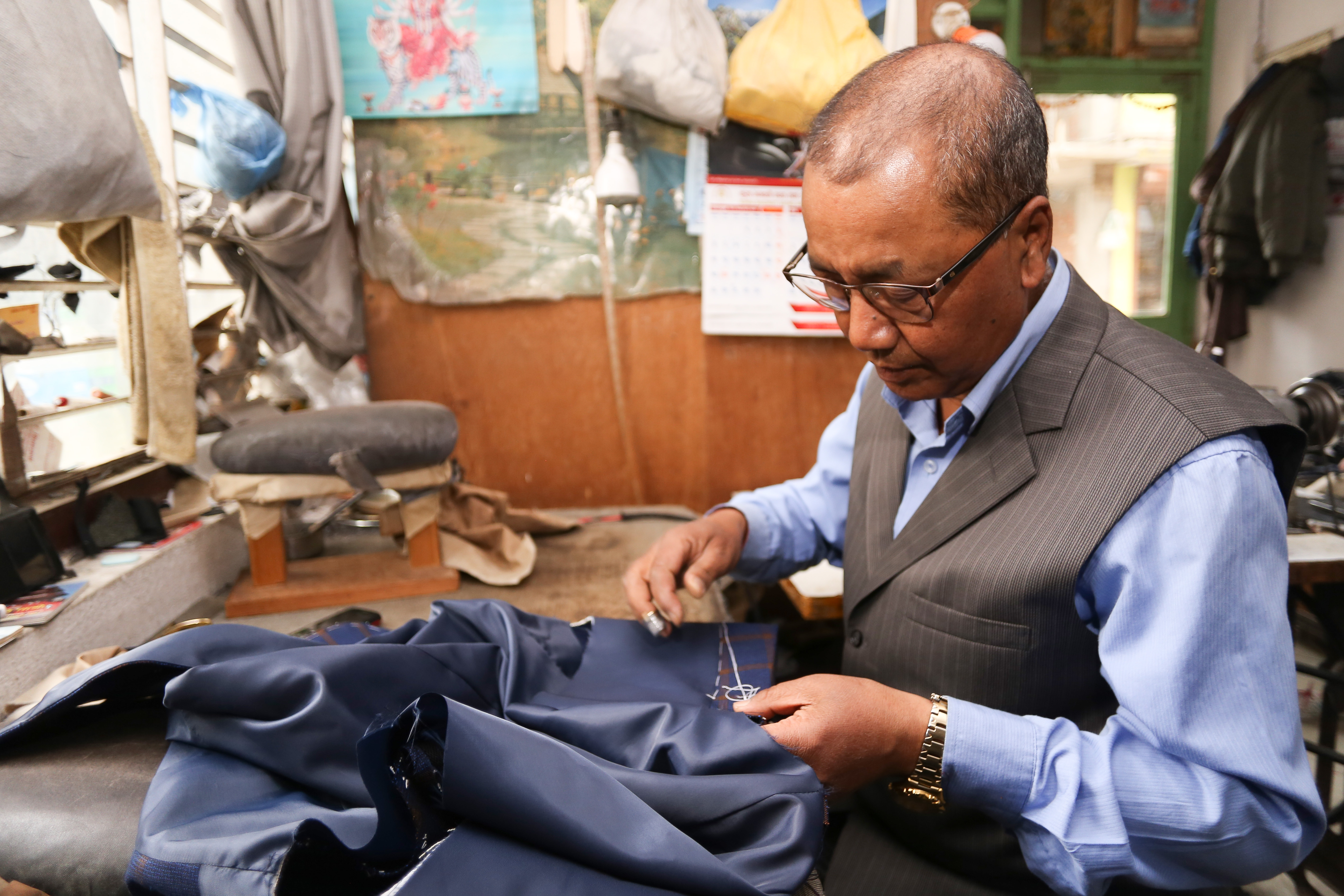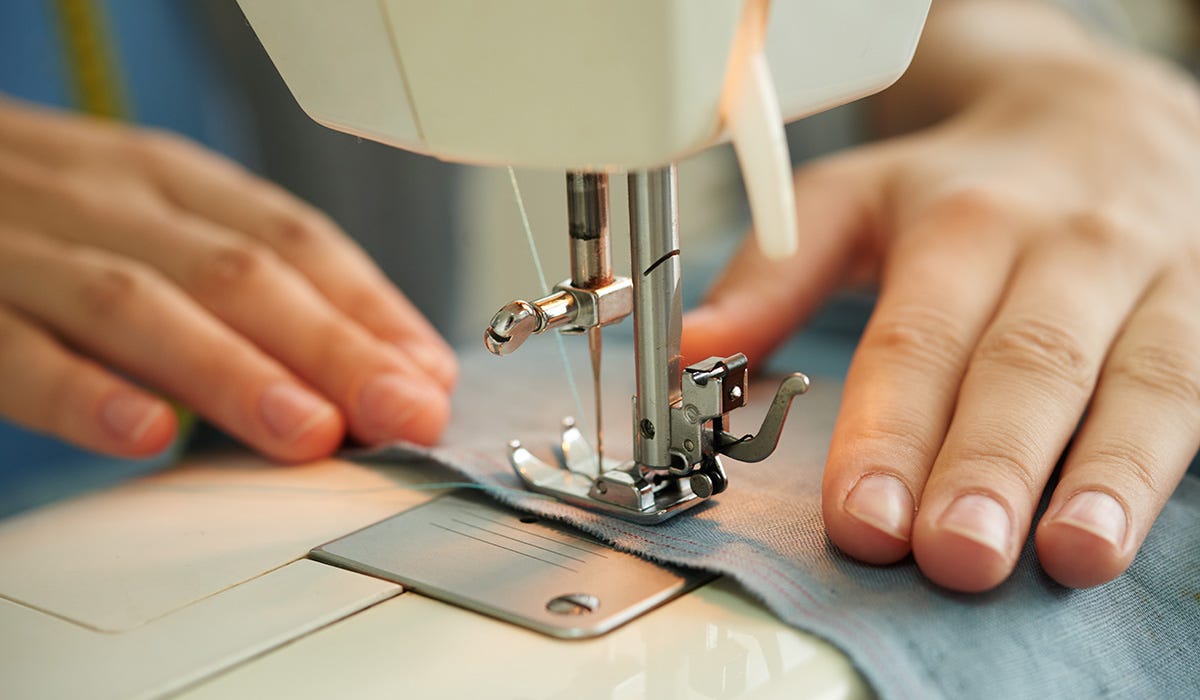Leading Tailor Perth Services: Tailoring Solutions for Perfect Fits
Wiki Article
Recognizing the Tailoring Process: From Material Choice to Final Suitable for the Suitable Closet
The customizing process is an intricate interaction of art and science, starting with the critical choice of textile choice and culminating in the accurate changes of last installations. Each textile type brings distinct qualities that influence not only the aesthetic charm however also the garment's durability and suitability for different events.Relevance of Material Choice
Picking the best material is important in the tailoring process, as it directly affects the convenience, resilience, and general visual of the final garment (tailor perth). The option of material establishes the foundation for the garment's performance, efficiency, and style. Different materials possess special properties, such as stretch, weight, and breathability, which can substantially influence exactly how the garment drapes and fits the bodyFurthermore, material choice affects the garment's long life and ease of treatment. High-quality fabrics can withstand deterioration, preserving their look and structure with time, while lower-quality products might bring about pilling or fading. Furthermore, the ideal material contributes to the garment's capacity to transition throughout events and periods, consequently improving flexibility.
A customized item made from a proper textile not just showcases workmanship however likewise boosts the user's confidence. Recognizing the subtleties of material choice is vital for any tailoring venture. It guarantees that the end product not just fulfills the visual desires of the customer however also aligns with practical requirements, thus attaining an unified equilibrium between type and feature in the tailored closet.
Types of Fabrics and Their Uses
Understanding the different kinds of textiles readily available is important for making informed choices during the tailoring process. Each fabric has special characteristics that determine its viability for particular garments and celebrations.Cotton, understood for its breathability and soft qualities, is perfect for laid-back wear and summertime garments. Its flexibility enables it to be customized into whatever from tee shirts to dresses. Wool, on the other hand, is favored for its warmth and structure, making it an excellent selection for formal suits and outerwear - tailor perth. Its natural elasticity assists garments preserve shape over time.
Silk shows deluxe and is lightweight, making it excellent for eveningwear and fragile shirts; nonetheless, it calls for cautious handling due to its delicacy. Bed linen, with its distinctive surface, is a popular choice for warm climates, offering a crisp and airy feel, however it wrinkles easily, which might affect the garment's appearance.
Artificial fabrics, such as polyester and nylon, offer toughness and resistance to creases, making them appropriate for daily wear and energetic garments. Comprehending these textile kinds and their homes permits better decision-making, guaranteeing that each customized item not just fits well but additionally aligns with the designated objective and celebration.
The Tailoring Techniques Clarified
The art of tailoring counts on a selection of methods that transform fabric right into well-fitted garments. Central to this process is pattern preparing, where a tailor develops layouts based on the client's dimensions and wanted style. This first step guarantees that the garment will fit the wearer properly prior to any kind of reducing occurs.Once patterns are established, reducing strategies enter into play. Precision is critical as errors can bring about misfitting garments. Tailors usually utilize various reducing methods, such as single-layer reducing for elaborate styles and multiple-layer cutting for efficiency on typical patterns.
Basting is another vital method, permitting dressmakers to momentarily sew material items with each other for an initial fitting. This approach uses the chance to evaluate the drape and total shape prior to final stitching.
Seaming techniques, including flat-felled joints and French joints, improve the garment's toughness and aesthetic allure. Tailors also use strategies such as interfacing and cushioning to give structure and shape to particular areas, like shoulders and collars.
Finally, completing strategies, including hemming and edge completing, ensure the garment's durability while giving a polished appearance. Together, these strategies develop the backbone of efficient tailoring, resulting in elegant, tailor-made garments.
Suitable Adjustments and Factors To Consider

Secret considerations include the shoulder fit, which must neither sag neither restrict motion, and the sleeve size, which must allow for comfy arm activity while maintaining a sleek appearance. Furthermore, modifications at the waist can refine the silhouette, important link with alternatives to allow out or take in material as required.
The increase of pants is another crucial element; it must rest pleasantly over the hips without creating pain, enabling convenience of activity. Hemming lengths for both pants and skirts need to show the wearer's recommended design while respecting percentages.

Maintaining Your Tailored Clothes
Constantly follow the treatment tag guidelines, which may recommend dry cleansing for delicate materials or equipment washing for more sturdy materials. Avoid regular laundering, as this can use down the material and modify the garment's shape.Storage space is similarly crucial; usage cushioned hangers for layers and jackets to preserve shoulder structure, and shop trousers folded up neatly or hung to avoid creasing. Shield garments from straight sunshine, which can fade colors and damages fibers.
Furthermore, routine examinations for minor repair work can avoid bigger concerns. Examine for loose buttons, tearing joints, or signs of moth damage, resolving these issues promptly to keep the garment's honesty.
Lastly, take into consideration seasonal turning. Using tailored pieces in moderation enables textiles to recoup, prolonging their life expectancy. By executing these maintenance techniques, you can make sure that your tailored garments continue to be as pristine as the day you initially used them, boosting your perfect wardrobe for years ahead.
Verdict
The customizing procedure, encompassing material choice, experienced strategies, and specific fitting modifications, plays a critical duty in developing garments that enhance both convenience and style. Each phase contributes to the total performance of the end product, ensuring that clothing not just fits well but likewise reflects specific identification. Moreover, understanding the significance of maintenance prolongs the life of tailored garments, solidifying their worth in a well-curated wardrobe. A thorough strategy to tailoring finishes in a certain and refined appearance.Choosing the right material is essential helpful resources in the tailoring process, as it directly affects the convenience, durability, and total aesthetic of the final garment. The selection of material sets the foundation for the garment's performance, performance, and design. Various materials have unique homes, such as weight, breathability, and stretch, which can considerably affect how the garment drapes and fits the body.
The art of tailoring Read Full Article counts on a variety of techniques that change fabric into well-fitted garments.The customizing process, including textile selection, experienced methods, and specific suitable modifications, plays a crucial role in developing garments that improve both comfort and style.
Report this wiki page